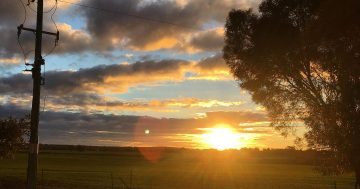
Turn your clocks back and check your smoke alarms for the end of daylight saving this Sunday. Photo: File.
Do you wish you could turn back time?
Or perhaps you’d prefer to wind your clock forward six months?
For people in the ACT and NSW, this Sunday morning, officially at 3:00 am, your clocks go back one hour. Time will be also known as Australian Eastern Standard Time (AEST).
Since we wound our clocks forward for the beginning of daylight saving on 6 October last year, a lot has happened, much of which we won’t want to be reminded of.
Technically, people enjoy an extra hour of sleep when daylight saving comes to end, and perhaps it is a good time to use that extra hour of sleep wisely. The Bureau of Meteorology is forecasting a maximum temperature of just 14 degrees Celsius in Canberra on Sunday, as a cold front sweeps through with strong westerly winds of 25 to 35 km/h.
But for early risers, there will be extra daylight in the morning and we will pull the blinds down an hour earlier.
Fire and rescue agencies in the ACT and NSW are also urging all residents to check their smoke alarms when they turn back their clocks for the end of Daylight Saving this weekend. Supermarkets are reporting they have a steady supply of batteries.
In Australia, daylight saving is observed in the ACT, New South Wales, Victoria, South Australia, Tasmania and Norfolk Island.
While theories abound of cows not being used to milking routines and hens’ egg-laying being thrown into disarray, the Bureau of Meteorology says the most significant effect is on the observation of climate data.
The BOM says the change in time affects their nominal 9:00 am observation, particularly on elements such as temperature and humidity. Problems occur when trying to evaluate the average monthly statistics in the months of changeover between daylight saving time and standard time.
During this period of the day, the temperature is rising quickly, and there can be a significant difference between the temperature taken at 8:00 am (standard time, by the sun) and that taken an hour later. Because of this, the relative humidity will also be affected.
Lucy Williams of the Sleep Health Foundation says the end of daylight saving isn’t nearly as disruptive to our bodies as putting the clocks forward.
“The body’s circadian rhythm, our built-in time clock, operates on a slightly longer than 24-hour cycle, which means that being able to extend our day, through going to bed a bit later in the evening, is much easier than it is to shorten our day [when clocks go forward].
“While it can take up to a week to feel back to normal after the beginning of daylight saving time in October, in April it usually only takes one night,” she said.
In Australia, daylight saving was first implemented nationally during the First World War and continued in the Second under Commonwealth defence provisions.
In peacetime, Tasmania adopted the practice in 1968, followed in 1971 by NSW, Victoria, Queensland, South Australia and the ACT.
However, Western Australia and the Northern Territory have never adopted daylight saving, and Queensland abandoned it in 1972. Christmas Island and the Cocos Islands also keep standard time, meaning Australia, the sixth-largest nation in the world by landmass, has three different time zones.


















